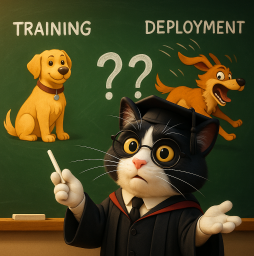
AI Safety IV: Sparks of Misalignment
This is the last, fourth post in our series...
Optical 3D range sensors, like RGB-D cameras and LIDAR, have found widespread use in robotics to generate rich and accurate 3D maps of the environment, from self-driving cars to autonomous manipulators. However, despite the ubiquity of these complex robotic systems, transparent objects (like a glass container) can confound even a suite of expensive sensors that are commonly used. This is because optical 3D sensors are driven by algorithms that assume all surfaces are Lambertian, i.e., they reflect light evenly in all directions, resulting in a uniform surface brightness from all viewing angles. However, transparent objects violate this assumption, since their surfaces both refract and reflect light. Hence, most of the depth data from transparent objects are invalid or contain unpredictable noise.

Transparent objects often fail to be detected by optical 3D sensors. For instance, glass bottles do not show up in the 3D depth imagery captured from an Intel® RealSense™ D415 RGB-D camera.
Enabling machines to better sense transparent surfaces would not only improve safety, but could also open up a range of new interactions in unstructured applications — from robots handling kitchenware or sorting plastics for recycling, to navigating indoor environments or generating AR visualizations on glass tabletops.
To address this problem, we teamed up with researchers from Synthesis AI and Columbia University to develop ClearGrasp, a machine learning algorithm that is capable of estimating accurate 3D data of transparent objects from RGB-D images. This is made possible by a large-scale synthetic dataset that we are also releasing publicly today. ClearGrasp can work with inputs from any standard RGB-D camera, using deep learning to accurately reconstruct the depth of transparent objects and generalize to completely new objects unseen during training. This in contrast to previous methods, which required prior knowledge of the transparent objects (e.g., their 3D models), often combined with maps of background lighting and camera positions. In this work, we also demonstrate that ClearGrasp can benefit robotic manipulation by incorporating it into our pick and place robot’s control system, where we observe significant improvements in the grasping success rate of transparent plastic objects